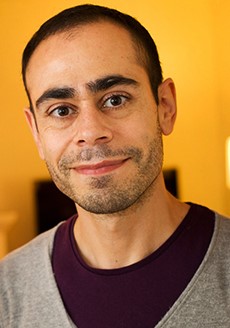Dr. Ricardo Daziano - A fast minorization-maximization algorithm for the mixture-of-normals logit model: value of time estimates under crowding conditions in the NYC subway.
- Date
- Thursday 3 May 2018, 11:00 - 12:00
- Location
- University of Leeds, Baines Wing SR 2.16
 Ricardo Daziano, Associate Professor of Civil and Environmental Engineering, Cornell University.
Ricardo Daziano, Associate Professor of Civil and Environmental Engineering, Cornell University.
A fast minorization-maximization algorithm for the mixture-of-normals logit model: value of time estimates under crowding conditions in the NYC subway.
22 February 2018, 11:00 to 12:00.
University of Leeds, Liberty Building, room 1.12.
Abstract:
A flexible semiparametric solution to the problem of specifying preference heterogeneity distributions in discrete choice problems is to adopt a mixture-of-normals multinomial logit (MON-logit) model. However, the loglikelihood function of this model is complex. In this work, we apply an alternative algorithm for estimation of the parameters the Gaussian mixture in the context of subway crowding. In public transportation, crowding refers to the subjective perception of the physical phenomenon represented by a high density of passengers in vehicles and at stations, stops and access-ways. In-vehicle crowding is, after price/fare and travel time, one of the most important variables explaining mode choice.
Econometric choice models of travellers’ decision-making are used to derive estimates of crowding multipliers, which represent the effect of passenger density on travel time perceptions. From a data perspective, stated preference surveys are usually used to collect information about in-vehicle crowding preferences. In this talk, the use of discrete choice experiments with visual representations of crowding for the estimation of crowding multipliers will be reviewed. Two case studies for two different subway systems will be presented, with data collected in Santiago (Chile) and New York City. In the case of Santiago, subway occupancy levels were shown with three alternatives, equivalent forms of representation (text, 2D diagram, and actual picture); however, no relevant influences of the different forms of representation on crowding perception were found. Preliminary results for New York City provide higher multipliers than those reported internationally.
About Ricardo:
Ricardo Daziano, PhD in economics (Université Laval, 2011), is an associate professor of Civil and Environmental Engineering at Cornell University. He is also the associate director of the Engineering Management Program, a core faculty member of Systems Engineering, a member of the Regional Science graduate field, a fellow of the Atkinson Center for a Sustainable Future at Cornell, and a National Science Foundation CAREER Awardee (2013). Daziano's research focuses on econometrics of consumer and travel behaviour applied to technological innovation in transportation, the built environment, and energy. Conventional methods in discrete choice modelling treat forecasts as deterministic, but Daziano's research aims to overcome this limitation by deriving robust, computationally efficient statistical inference methods for stochastic policy-oriented analysis and non-market valuation. His goal is to better understand the interplay of consumer behaviour and engineering, investment, and policy choices for energy-efficient technologies and for better, more resilient cities. Daziano's specific empirical research interests include the analysis of new urban transportation business models (mobility on demand), the study of preferences toward new vehicle technology (automation), modelling the adoption of sustainable travel behaviour, estimating willingness-to-pay for renewable energy, and forecasting consumers' response to environmentally-friendly energy sources.
